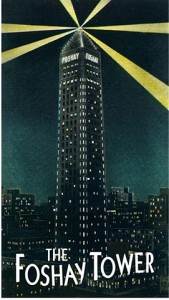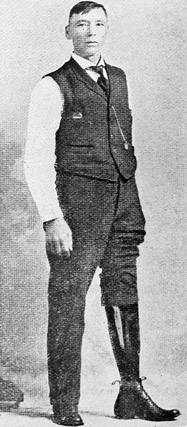
Photo credit: mnopedia.org
1949
Turkey farmer Earl Olson buys a processing plant in Willmar, the beginning of Jennie-O Foods. Wheat feed and the growth of Jennie-O and related companies make this region a hub of turkey farming. By 1999, Jennie-O turns buys enough turkeys from independent farmers to produce 860 million pounds of 400 different turkey products. The company is known as the world’s largest turkey processor.*
For readers outside the midwest, or unfamiliar with this amazing bird, we first ask the question; why does turkey matter? Our state is fortunate to be home to the Minnesota Turkey Growers Association; a think-tank for the center-piece of our Thanksgiving meal! Please peruse some of these facts below to see why the MTGA is so enthusiastic about phasianidae!
“Minnesota is ranked #1 for both turkey production and processing in the U.S.
Each turkey generates $17.46 of direct economic activity to the state.
Minnesota’s turkey companies – Jennie-O Turkey Store, Turkey Valley Farms and Northern Pride Cooperative – employ over 7,600 people.
Turkeys are allowed to move freely throughout the barn. They are not kept in cages.
It takes 75-80 pounds of feed to raise a 30-pound turkey.
To reach full grown, tom turkeys are raised for about 18 weeks and hens are full grown at 15 weeks.
The average turkey has 3,500 feathers.
Only tom turkeys “gobble;” hens “click”.
Turkey meat packs more protein and less total fat than similar cuts of chicken and beef.
Turkey is low in cholesterol and trans-fat free.
A frozen turkey can last up to a year in the freezer.” **
Learning even these few facts, we see the utility of turkey farming. Perhaps seeing this potential 80 years ago partially explains the motives of Earl Olson. To add further, Earl was born May 8, 1915 to Swedish immigrants in Murdock, Minnesota, Swift County just before World War I. This would place Earl as a teen who experienced the scarcity of the Great Depression. Could this be a root motive to spark his fire for a cost-effective, healthful, and environmentally responsible source of meat?
Going to the company website, we find a useful outline of some of Olson’s history and visions for turkey processing.
“Earl B. Olson, Founder of Jennie-O Foods
Earl B. Olson is considered an icon in the turkey business. His tireless efforts and forward thinking helped propel Jennie-O Turkey Store and the turkey industry to what it is today.
1940: Earl starts raising turkeys while managing a small creamery.
1949: Earl purchased his first turkey processing plant, Farmer’s Produce Company, in Willmar, Minnesota.
1950: Dairy and other poultry products are phased out to focus solely on turkey.
1953: Earl converts Farmer’s Produce Company to a USDA-inspected turkey plant and names the brand JENNIE-O®—after his daughter, Jennifer.
1954: Farmer’s Produce Company purchases a second plant and seeks international distribution. A third plant is purchased in 1966.
1963: Earl’s son, Charles, joins the sales staff and becomes president in 1974.
1971: Farmer’s Produce Company changes name to Jennie-O Foods, Inc.
1973: The Willmar Avenue plant and corporate office are built to accommodate expanding processing capabilities.
1984: Jennie-O Foods, Inc. is among the first to develop the turkey hot dog, using a top-secret seasoning recipe and a custom-built, continuous oven stretching 100-feet long.
1986: Jennie-O Foods, Inc. is purchased by Hormel Foods Corporation.” ***
How does one give gratitude for our national symbol of Thanksgiving, Lord? Will You come, Holy Spirit, and lead us to ponder Mr. Olson’s contributions to Minnesota? Will You help us think about Your contributions to us through the members of the turkey family: Beltsville Small White, Bourbon Red, Jersey Buff, Narragansett, Royal Palm, Slate, Standard Bronze White Holland, Broad-Breasted Whites, and Heritage (Wild) Turkeys?
As You say, “the first deal be last, and the last first”, and so we start by remembering what gifts have been given to this continent through Meleaagris gallopavo a.k.a. Wild Turkeys. We thank You that they were an important food source for the Ojibwe and Dakota Nations for hundreds of years in Mni Sota (Minnesota). **** We remember that because turkeys were indigenous to North America, Spaniards, the French, and the English all fared better. ***** Thank You for giving us the “big brother” of the grouse to hunt for all these years! We remember that You made the marvelous wild turkey that could fly fast, run swiftly, and be positioned here for our survival!
Also, we recollect the bounty of the birds that went back to Europe and returned over time as our present-day domesticated breeds of turkey! We thank You that Mr. Olson saw the incredible utility of farm-raised turkeys! That he grew his business with a conscience that respected You, the land, the farmer, and the animal.******
Maybe this conscientiousness is why You chose him to oversee the increase of our State’s turkey production; we went from an insignificant source in 1949 to 42 million birds in 2019. ******* We thank You as a people for his stewardship of turkey’s! We ask Your blessing on every Minnesota turkey whether: Tom (male adult), Hen (female adult), Poult (baby), Jake (young male), or Jenny (young female)! We ask Your blessing on every turkey farmer past, present, and future! Will You give us grace and knowledge, like Earl B. Olson, to have such incredible focus on our life’s work, and cultivate a healthy culture across all forms of life raised in Minnesota?
* P.T.H. cites timeline formerly at this URL: mnhs.org/about/dipity_timeline.htm
The Minnesota Historical Society Web site, http://www.mnhs.org, is fantastic! Check it out! Images are from https://images.google.com/?gws_rd=ssl; again, an amazing resource!
** https://minnesotaturkey.com/turkeys/fun-facts/#toggle-id-1
*** https://www.jennieo.com/content/our_history
**** https://www.thecanadianencyclopedia.ca/en/article/wild-turkeys-in-canada
***** https://blog.nwf.org/2012/11/lets-talk-turkey-history-of-wild-icon-in-america/
****** Obituary. Internet. December 13, 2006. StarTribune, Mpls.,MN. http://www.startribune.com/obituaries/detail/9061815/
******* https://www.ers.usda.gov/newsroom/trending-topics/turkey-sector-background-statistics/








